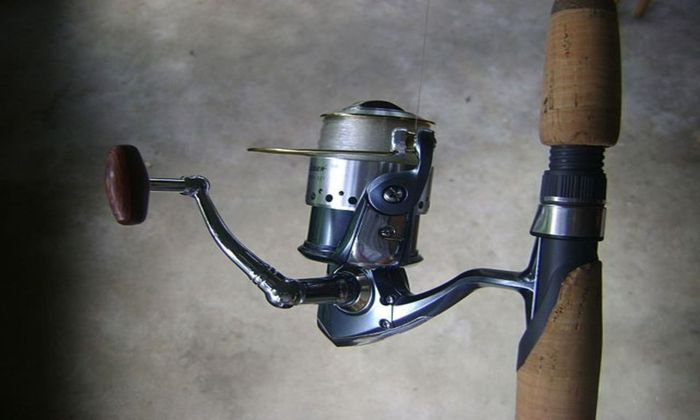Tips on Setting Drag
Here's everything an angler needs to know about setting up a drag.

Fighting a fish and catching it is not as simple as it looks. People often think that catching fish is luring it in the most challenging part. However, there is some truth to that, given the various lures, baits, and techniques available. Regardless, reeling in fish can be just as complicated. The common misconception is that reeling in fish means pulling hard enough. Although holding onto a rod attached to a thrashing fish is an absolute necessity, there are more levels to it than that. Properly using a disk drag is one of the most critical things anglers need to know when reeling fish. Failure to properly use a drag can result in broken lines and even burnt fingers.
The drag is a pair of plates that use friction to control the length of fishing lines able to come out of the spool while fighting fish. As fish pull on the line as it tries to get away, they can sometimes pull outlines by force. As the cable is pushed out, the reel simultaneously rotates backward to do so. By setting up the drag before trying to catch any fish, the angler’s rod can set a pace of how fast or slow the fishing line will be able to rotate out of the spool. It is recommended that anglers set up the drag before catching fish. Although it is entirely possible to adjust while fighting a fish, it is not advised as it might cause damage to the gear. Adjust while reeling in fish as a last resort and not too often.
While fishing lines being broken by fish are not a rare occurrence, it is still great to minimize the chances of that happening. Fishing can be quite an expensive sport, so cutting costs through proper gear usage is highly encouraged. Besides the monetary losses through line breaks, fishing getting away can also leave a bad taste in the mouth. By properly setting up a drag, anglers can prevent different line breaks when it comes time to reel in fish. Here are some tips every angler needs to know about setting up drag.

Setting Up Drag: Everything You Need to Know
1. Drag on Conventional/ Spinning Reels

Most anglers can probably get by with just learning these as these types of reels are the most common. The best way to set up a drag on a spinning reel is to test out the line by pulling out the line by hand. This gives an angler a feel for how fast and slows the pace of the cable going out. When deciding the right drag, a rule of thumb many anglers use is setting it up ¼ of the fishing line. For example, using a 20 lb line should accompany a 6 lbs to 7 lbs strike.
2. Take Note of the Fishing Line
Line type is also an essential factor when setting up drag. Depending on the material and make of the line, the drag can adjust. Regular monofilament lines stretch much easier than braided lines. There is little stretching involved when drop-shotting or jigging, so anglers should plan the drag accordingly. Often, anglers using braided lines can find the drag set up too tight. The result can usually be the fishing line breaking. Sudden movements by the line can put too much tension on the already secured line. Loosening the drag is a great way to release that tension. Fluorocarbon and monofilament lines are the complete opposite of braided lines, so it’s best to set up the drag a little bit tighter than usual.
3. Using Star Drag
Compared to the usual drag on regular reels, star drag provides much more options when trying to control the flow of the line. These types of drag are usually found in reels meant for trolling. Though holding the drag works as simple as cranking the star-like lever on the side to the preferred level, its internal mechanisms are much more complicated. When tightened, the pressure gets applied to its stack of washers. The pressure then transfers from the drag washer to its two gears, the drive gear and the smaller gear in control of the spool. The force that builds from the whole sequence is what essentially controls the pacing of how the spool releases the fishing line.
While setting up the drag before attempting to catch a fish is a good practice, one great thing about the star drag is that anglers can adjust the drag mid-fight. There’s little worry for drag to receive damage through adjustments while fighting fish than a lever drag or any conventional drag.
4. Learn Drag Maintenance
While not necessarily a tip for setting up drag, maintenance plays a significant part in how well the drag releases the fishing line. Wear and tear can be a serious problem for all sorts of fishing gear. Anglers and their equipment are up against the elements as an outdoor recreational sport. Mud, blood, and guts can become a big problem when unaccounted for by the angler. This is especially the case for anglers who frequent fishing trips to the sea. The salt found in the water is very corrosive and can speed up the degradation of the materials. With fishing the way it is, gear maintenance is important.
First and foremost, anglers should remove the spool to access the drag system. Anglers should then remove the drag washers. Take note that different drag has different ways to remove them. Next is to remove any dirt and outside elements from the inside. Finally, it is time to clean the washers by removing grease using a towel. Anglers should then apply new lubrication before setting the drag washers back into the spool. The lubrication can also help slow down corrosion. Since drag on reels and spools use friction to function, removing and reapplying lubrication is crucial.




